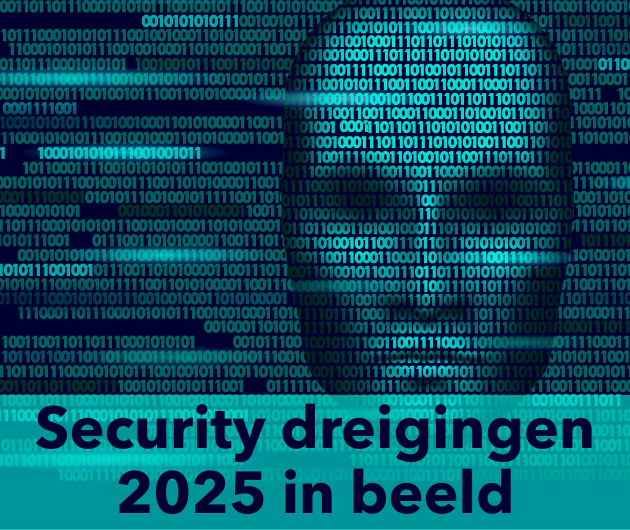Door Sean Tilley, EMEA Senior Director of Sales bij 11:11 Systems
In de dynamische wereld van private equity (PE) is het uiteindelijke doel duidelijk: de waarde van portefeuillebedrijven maximaliseren om een zo hoog mogelijk investeringsrendement te behalen. Dit vereist een veelzijdige aanpak, waarbij operationele efficiëntie, financiële groei en de strategische koers allemaal belangrijke onderdelen zijn.
Operationele veerkracht, met name op het gebied van beveiligingsservices en noodherstel, oftewel Disaster Recovery as a Service (DRaaS), is cruciaal voor het waarborgen van de waarde van portefeuillebedrijven op de lange termijn. In de huidige omgeving waarin we voortdurend te maken hebben met cyberdreigingen zoals phishing, ransomware en onvoorziene verstoringen, moeten PE-bedrijven ervoor zorgen dat hun portefeuillebedrijven voorbereid zijn op het ergste en in staat zijn om dit te doorstaan.
Navigeren door een evoluerend risicolandschap
Het risicolandschap voor bedrijven is de laatste jaren enorm veranderd. Cyberdreigingen, ransomware-aanvallen, datalekken, natuurrampen en wereldwijde pandemieën zijn onderdeel geworden van het nieuwe normaal. De potentiële impact van deze risico’s voor portefeuillebedrijven is groot. Een grote cyberaanval of een langdurige operationele onderbreking kan leiden tot aanzienlijke financiële verliezen, reputatieschade en, in extreme gevallen, de volledige ondergang van een bedrijf.
Private-equitybedrijven die gericht zijn op waardecreatie, kunnen het zich niet veroorloven deze risico’s te negeren. Dat portefeuillebedrijven over robuuste beveiligingsmaatregelen en een uitgebreid noodherstelplan moeten beschikken is niet langer optioneel, het is absoluut noodzakelijk.
De portefeuillewaarde beschermen en verbeteren
Operationele verstoringen kunnen directe financiële verliezen tot gevolg hebben, maar de indirecte effecten kunnen net zo schadelijk zijn. Een inbreuk op de beveiliging kan bijvoorbeeld het vertrouwen van klanten aantasten, tot boetes van regelgevende instanties leiden en de interesse voor een bedrijf bij potentiële kopers aanzienlijk doen afnemen. Voor PE-bedrijven die een participatie willen verkopen of afstoten, kan de waardering van het bedrijf hierdoor afnemen, waardoor het totale investeringsrendement daalt.
Bedrijven die blijk geven van een sterke operationele veerkracht zijn daarentegen aantrekkelijker voor potentiële kopers en partners. Ze worden gezien als veiligere investeringen doordat ze in staat zijn om crises te doorstaan en hiervan te herstellen. Deze veerkracht beschermt de huidige waarde van het bedrijf en kan deze zelfs verhogen, wat hogere waarderingen oplevert bij het verkopen van participaties.
Cyberbeveiliging als hoeksteen
Cyberbeveiliging vormt de kern van operationele veerkracht. Door de toenemende digitalisering van bedrijfsprocessen is de blootstelling aan cyberrisico’s nog nooit zo groot geweest. PE-bedrijven moeten ervoor zorgen dat hun portefeuillebedrijven geïnvesteerd hebben in cyberbestendigheid, waaronder geavanceerde beveiligingsservices zoals bedreigingsdetectie, incidentrespons en voortdurende monitoring.
Door een proactieve benadering van cyberbeveiliging kunnen bedrijven kwetsbaarheden identificeren voordat anderen hiervan misbruik maken en snel reageren op eventuele incidenten. Dit beperkt niet alleen de potentiële schade tot een minimum, maar toont ook aan dat het bedrijf zich inzet voor de bescherming van klantgegevens en bedrijfsactiviteiten, belangrijke factoren voor het behoud van de reputatie en waarde van een bedrijf.
Bovendien kan het niet naleven van gegevensbeschermingswetgeving zoals GDPR of AVG leiden tot hoge boetes en kan het juridische gevolgen hebben. PE-bedrijven moeten ervoor zorgen dat hun portefeuillebedrijven aan alle relevante regelgeving voldoen, omdat het niet naleven daarvan tot financiële sancties en reputatieschade kan leiden.
Het belang van noodherstel
Cyberbeveiliging is cruciaal, maar het is slechts één stukje van de puzzel van operationele veerkracht. PE-bedrijven moeten zich ook afvragen hoe hun portefeuillebedrijven zouden herstellen van een catastrofale gebeurtenis, zoals een natuurramp, een grote cyberaanval of een systeemstoring. Hier is een belangrijke rol weggelegd voor Disaster Recovery as a Service (DRaaS).
DRaaS is een cloudoplossing die ervoor zorgt dat de gegevens en kritieke IT-systemen van een bedrijf snel kunnen worden hersteld na een onderbreking. Dit beperkt de downtime, vermindert gegevensverlies en zorgt ervoor dat de bedrijfsactiviteiten met minimale onderbreking kunnen worden voortgezet. PE-bedrijven die voor hun portefeuillebedrijven in DRaaS investeren zorgen ervoor dat de bedrijven elke storm kunnen doorstaan.
Een ander belangrijk voordeel van DRaaS is dat het een kosteneffectieve oplossing biedt. Traditionele noodhersteloplossingen vereisen vaak grote kapitaalinvesteringen in redundante infrastructuur en speciale uitwijklocaties. DRaaS maakt daarentegen gebruik van de cloud en biedt een schaalbare, flexibele oplossing die kan worden aangepast aan de specifieke behoeften van elk portefeuillebedrijf. Dit houdt de kosten laag en maakt een sneller en efficiënter herstel mogelijk, waardoor de operationele veerkracht van het bedrijf verder wordt vergroot.
Operationele veerkracht als concurrentievoordeel
In de huidige snelle en onvoorspelbare bedrijfswereld is operationele veerkracht niet alleen een defensieve strategie; het is ook een concurrentievoordeel. Bedrijven die blijk kunnen geven van een sterke veerkracht zijn beter gepositioneerd om nieuwe klanten te werven, klanten te behouden en investeringen aan te trekken. Voor PE-bedrijven vertaalt dit zich in hogere waarderingen, meer succesvolle exits en uiteindelijk een hoger investeringsrendement.
Door ervoor te zorgen dat portefeuillebedrijven de nodige investeringen hebben gedaan in beveiligingsservices en DRaaS, kunnen PE-bedrijven hun investeringen beschermen tegen onvoorziene risico’s en hun marktwaarde vergroten. In een wereld waar operationele verstoringen steeds vaker voorkomen, is het vermogen om uitdagingen niet alleen te overleven maar ook sterk te blijven presteren een maatstaf die de succesvolste portefeuillebedrijven en hun investeerders onderscheidt van de rest.
Een strategische noodzaak voor PE-bedrijven
Operationele veerkracht zou een topprioriteit moeten zijn voor elk PE-bedrijf dat de waarde van zijn portefeuille wil maximaliseren. Door ervoor te zorgen dat hun portefeuillebedrijven over robuuste beveiligingsservices en effectieve noodhersteloplossingen beschikken, kunnen PE-bedrijven zich beschermen tegen potentiële bedreigingen en hun investeringen positioneren voor duurzame groei en succes. Uiteindelijk wordt het investeringsrendement van operationele veerkracht niet alleen op financieel vlak gemeten, maar ook op de stabiliteit, het vertrouwen en de levensvatbaarheid op lange termijn van de portefeuillebedrijven zelf.
Meer lezen








